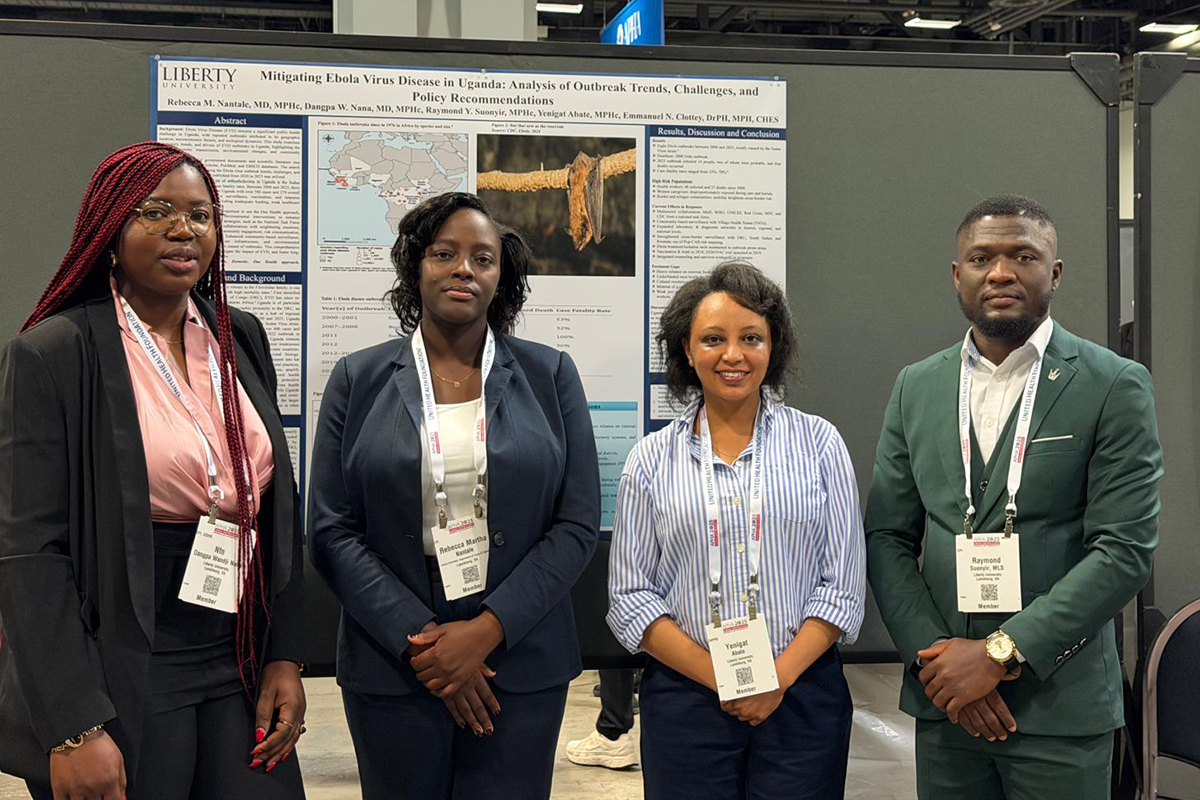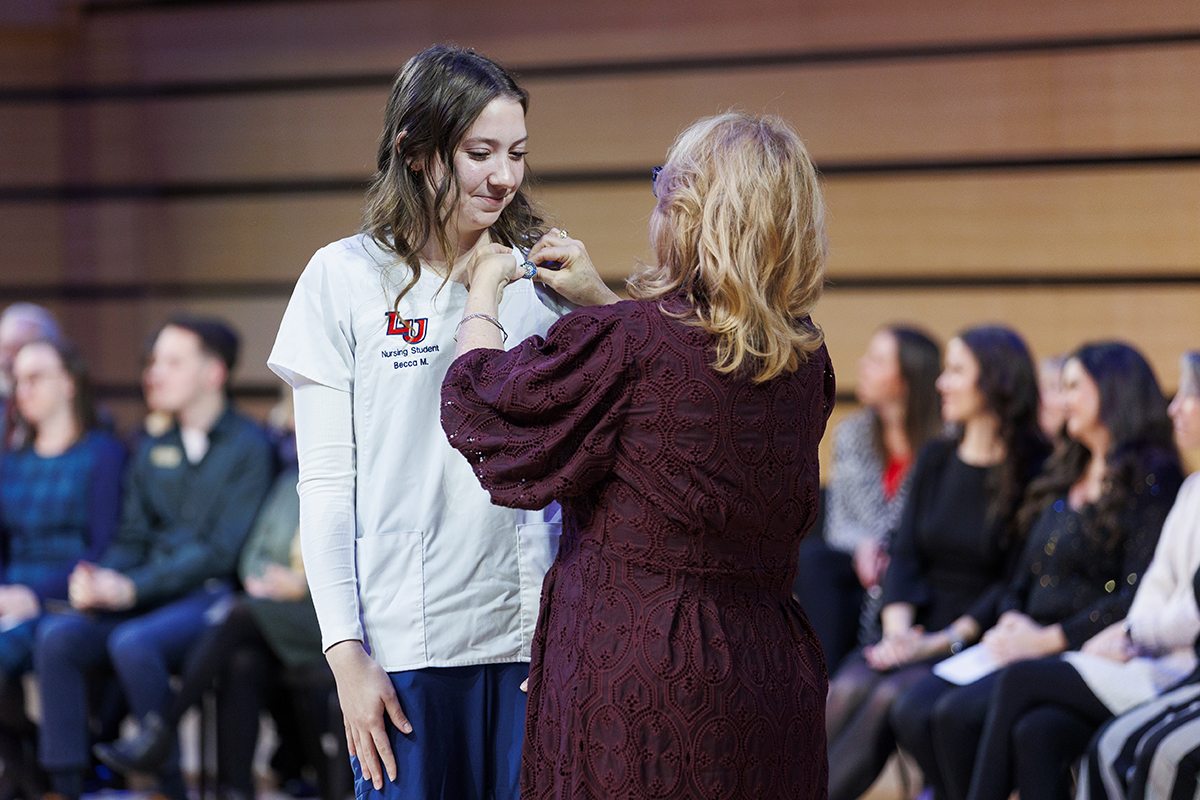Liberty hosts events celebrating the wonders of God’s creation and the truths of science
July 27, 2022 : By Ted Allen - Office of Communications & Public Engagement
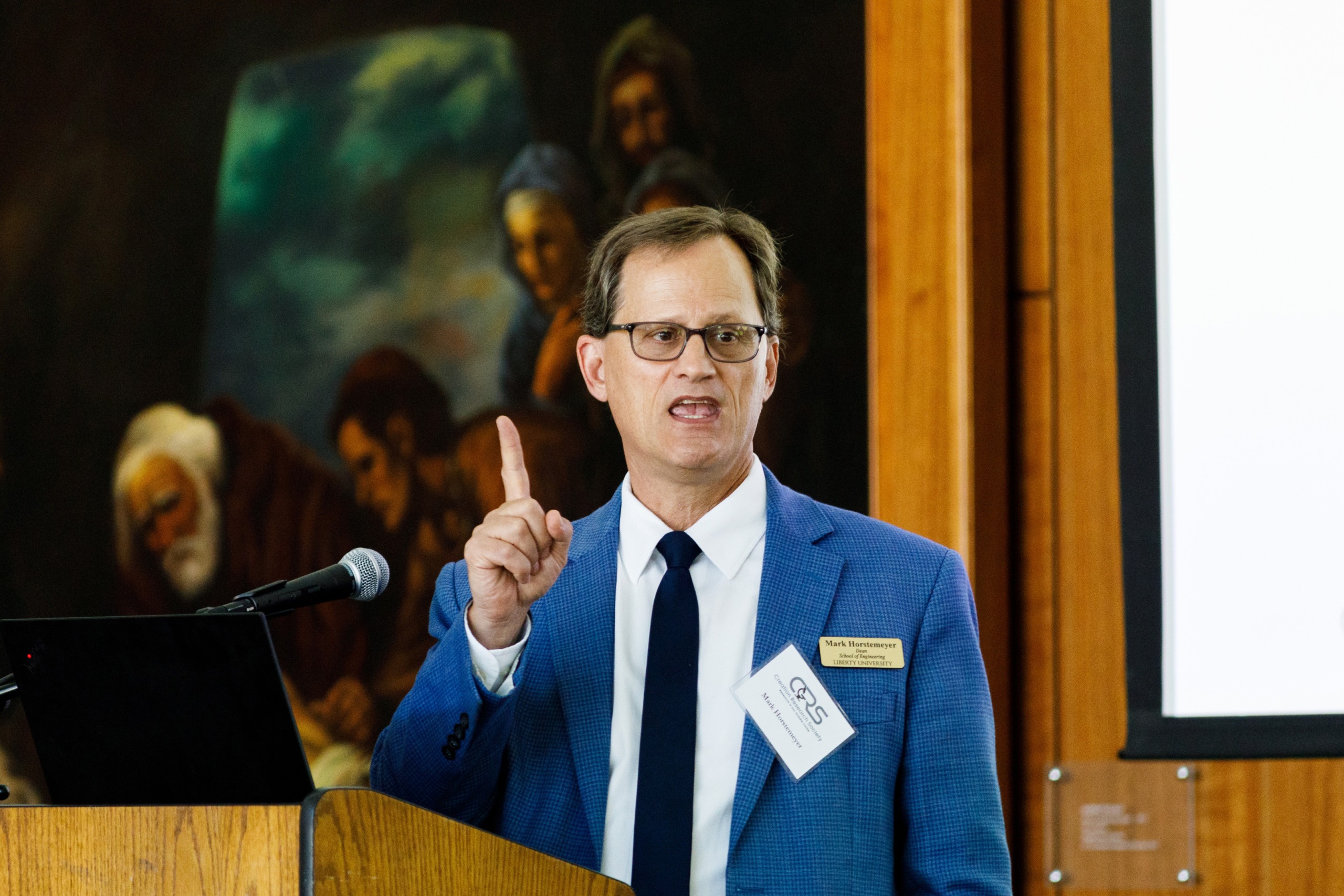
Late last week, Liberty University hosted the Creation Research Society’s annual conference, welcoming members from the worldwide scientific society for workshops and presentations including astronomy, biology, geology, and engineering.
Nearly 200 guests joined the conference held Thursday through Saturday. The society includes scientists from the Dallas-based Institute for Creation Research, Answers in Genesis in Kentucky, and Creation Ministries International in Georgia, among other organizations.
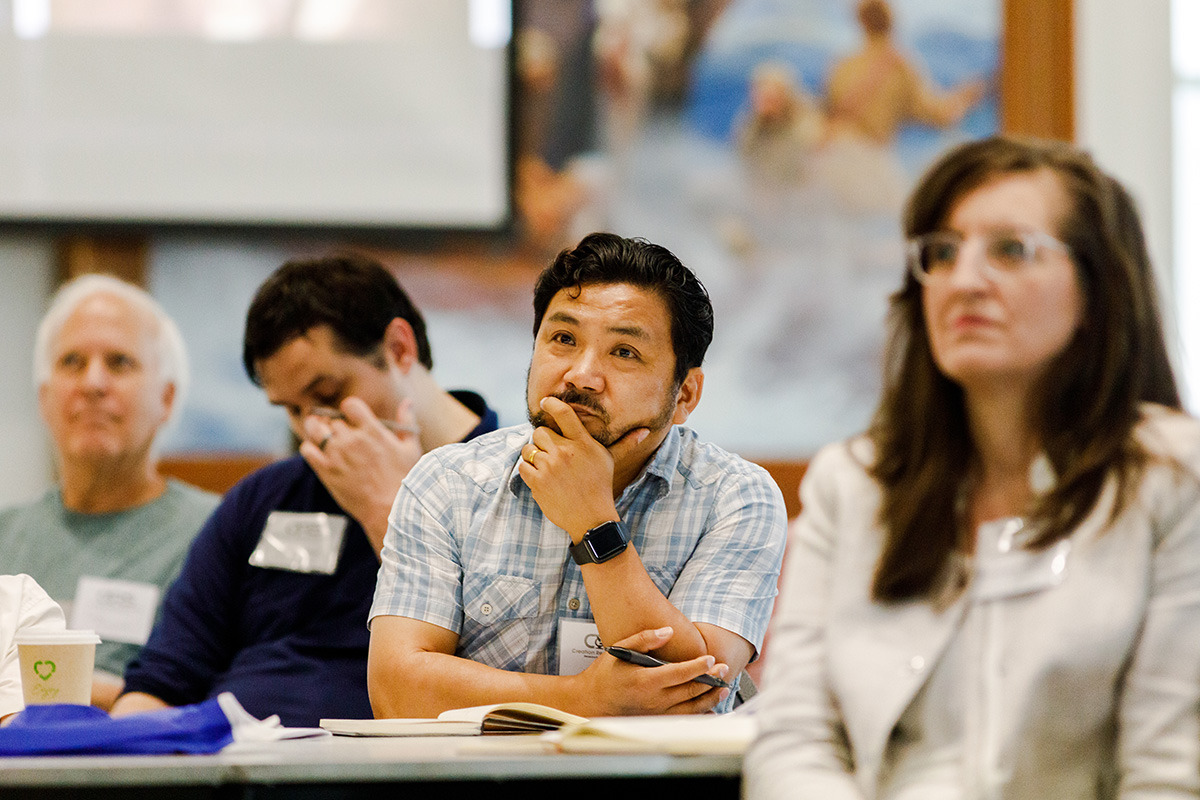
The conference opened on Thursday, with four workshops pertaining to different areas of creation study: astronomy, led by Danny Faulkner from Answers in Genesis; biology, led by Rob Carter from Creation Ministries International; education, led by Mike Riddle from the Creation Training Initiative; and geology, led by Liberty School of Engineering (LUSE) Adjunct Professor Marcus Ross, a former biology and geology professor at Liberty who now also develops homeschool science kits for Cornerstone Educational Supply.
Friday’s and Saturday’s conference sessions featured 24 half-hour-long presentations followed by question-and-answer periods and breaks that allowed time for networking and encouraged the free flow of ideas among fellow creation scientists.
Two presenters were from outside the United States: Dr. Andy McIntosh, who holds an emeritus chair in thermodynamics at the University of Leeds in Great Britain, and Dr. Stuart Burgess, also from England, who formerly worked for the European Space Agency and has served as a Liberty adjunct professor.
Several Liberty professors, graduates, and students took part in the conference, including School of Engineering Dean Dr. Mark Horstemeyer, who presented on the trinitarian design methodology of God’s creation, and School of Engineering Research Professor Emeritus Dr. John Baumgardner, who spoke on how “Language Falsifies Philosophical Naturalism.”
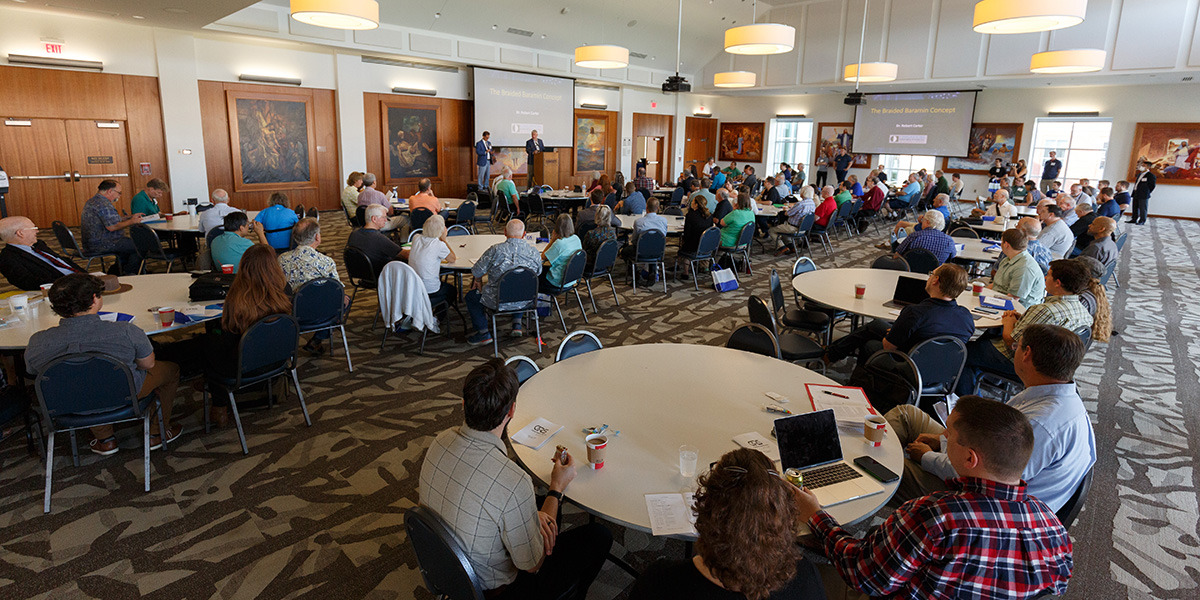
Horstemeyer, who serves on the CRS board, suggested bringing this year’s conference to Lynchburg, Va. He said it turned out to be the society’s largest to date and that the university was an ideal location to host it.
“Few institutions exist that still hold to the young age of the earth (6,000-10,000 years old), original 24-hour day, and seven-day week as explained clearly in Genesis, but Liberty University and the Creation Research Society have continued to encourage research to support the Bible’s position on this stance,” Horstemeyer said. “Both institutions also recognize that atheistic evolutionism is a belief system without much scientific backing. Furthermore, both institutions agree that God was the original Engineer who designed, procured, and manufactured the original universe.”
The society produces a peer-reviewed Creation Research Quarterly magazine, publishing scientific articles of varying viewpoints that advance its research mission.
On Thursday, During the astronomy workshop, Horstemeyer, Faulkner, and Creation Research Society President Bob Hill assessed Liberty’s state-of-the-art 24-inch telescope housed on-campus at its Astronomical Observatory and its potential to be the world’s first telescope equipped for creation science research.
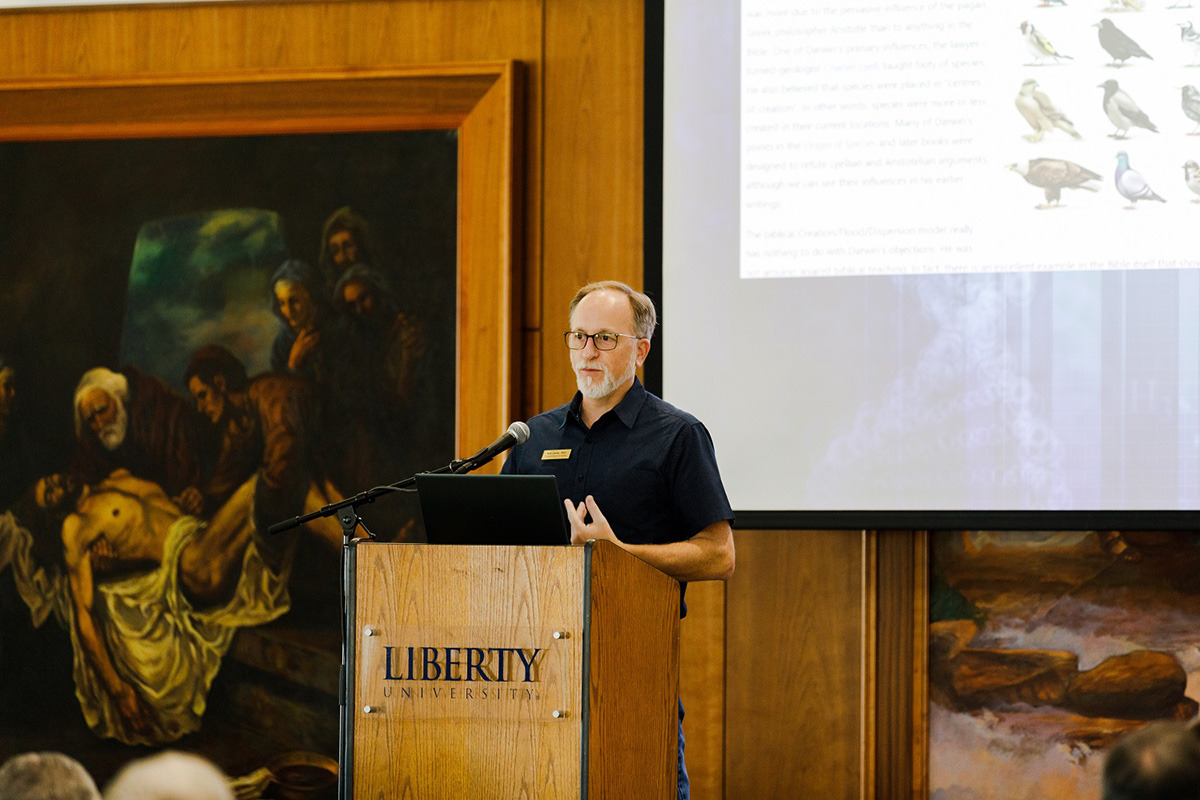
This week, 14 graduate students from the School of Engineering presented their research at Liberty’s first Graduate Student Creationeering Conference, held at the university’s Center for Engineering Research & Education (CERE) in nearby Bedford County.
The School of Engineering launched its master’s and Ph.D. programs in 2020 and celebrated its first graduates in December and May, respectively.
Dr. Diana Schwerha, chair of Liberty’s Computer, Electrical, and Industrial and Systems Engineering departments, said “Creationeering” is a concept Horstemeyer has introduced into all of the school’s curriculum. Liberty University has trademarked the term.
“At Liberty, we are focused on utilizing God’s designs (from the natural world) to inform our research projects,” she said. “We incorporate Creationeering into our research and our curriculum. We acknowledge that God was the first engineer in that He created the world, and we are called to continue to follow him and create products and systems. Through our work, we worship Him and help our society.”
Drs. McIntosh and Burgess stayed in town to participate in the student conference and delivered the plenary addresses before they and other attendees offered feedback on the students’ presentations. McIntosh spoke on the irreducibly complex and marvelously designed Bombardier Beetle to open Monday’s session before Burgess talked about the evidence of intelligent design in the human hand on Tuesday morning.
Student presenters and their research included:
- Adriel Lau: “Multiscale Mechanical Structure – Property Relationships of Bones”
- Daniel Kenney: “Improving Lightweight Designs by Modeling Deformation Twinning in Magnesium Alloys”
- Daniel Wilson: “Smart Atomization: Implementation of PID Control in Biosludge Atomizer” and “Smart Atomization of Banana Puree in Pulsing Twin-Fluid Injector”
- Elijah Yoder: “Biomimicry: Modeling the Bombardier Beetle Fire Extinguisher”
- Evangeline Bulla: “Investigative study of solar assisted pyrolysis for seven different biomasses using steam as the pyrolysis medium”
- Joby Anthony III: “Mathematically Modeling Non-Sinusoidal Kinematics of Linear SMAT Milling via Particle Tracking”
- Julian Tse Lop Kun: “Scaling Up Porous Copper Foams by Planetary Milling and Oxide Reduction”
- Maria Lee: “Multiscale Modeling of Grain Growth of Olivine-Pyroxene Mixtures in the Earth’s Mantle: Atomistic and Phase Field Theory”
- Mohsin Al-Taie: “Application of Lean in Construction: Benefits from Using the Last Planner System (LPS)”
- Noel Allapatt: “A Fully Coupled Multiscale Constitutive Model for Analyzing Brain Damage Under Mechanical Impacts”
- Reid Prichard: “In Pursuit of a Universal High Performance Computing Optimization Methodology” and “A Universal Parametric Study of Shark Denticles’ Anti-Flow-Reversal Mechanism”
- Robert Kacinski: “Establishing a Baseline CFD Model for Examining Benefits of High-Flow Nasal Cannula Oxygen Therapy”
- Sam Scott: “Application of Position and Energy Controlled Surface Mechanical Attrition Treatment for Tailoring of Strength-Ductility Properties in Metal Components”
Additionally, the School of Engineering’s first Ph.D. graduate Dr. Tate Fonville, now an assistant professor, presented a football helmet impact safety study that was the basis of his dissertation.
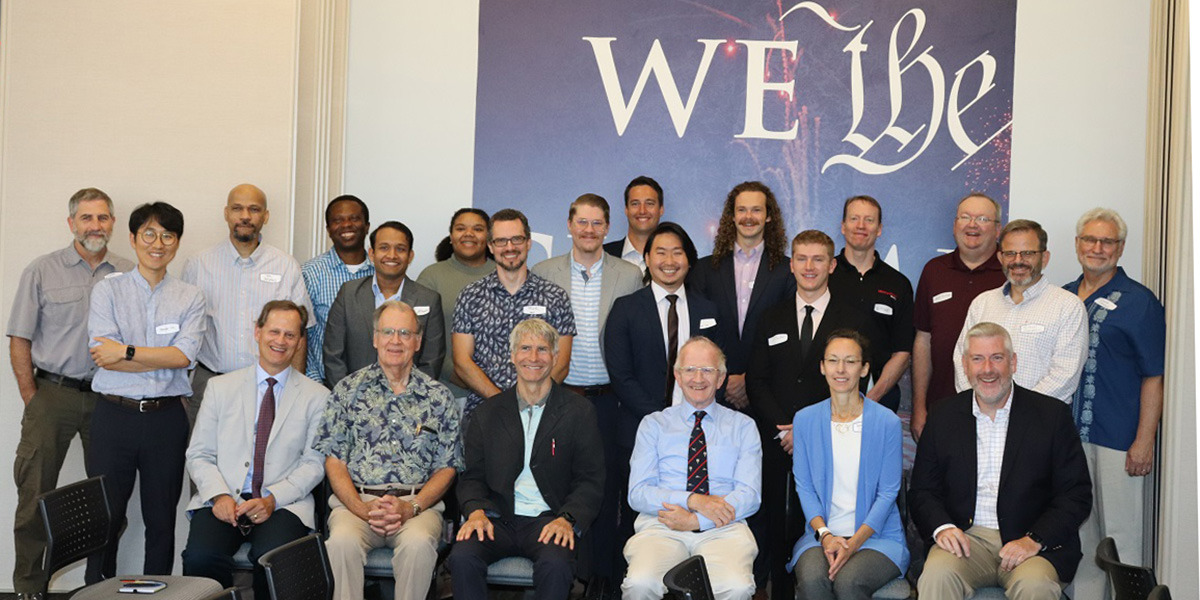
Dr. Horstemeyer (front row from left), Dr. John Baumgardner, Dr. Stuart Burgess, Dr. Andy McIntosh, Dr. Diana Schwerha, and Liberty Provost Scott Hicks are surrounded by School of Engineering professors and graduate students during Monday’s first Graduate Student Creationeering Conference at the Center for Engineering Research & Education (CERE) in nearby New London, Va. (Photo courtesy of Hannah Horne)
